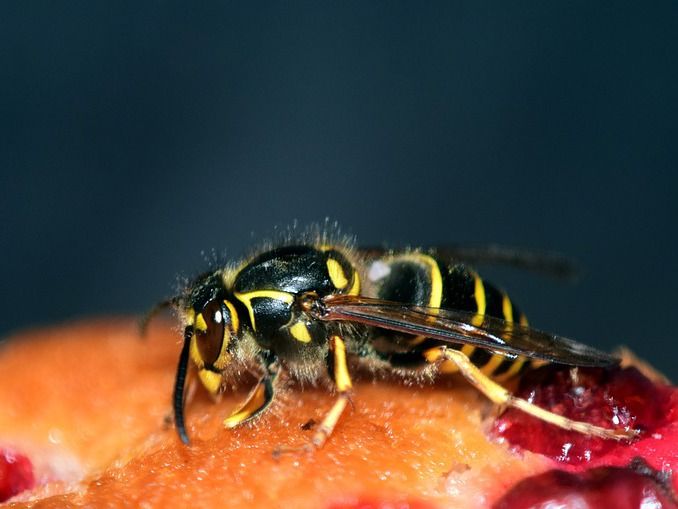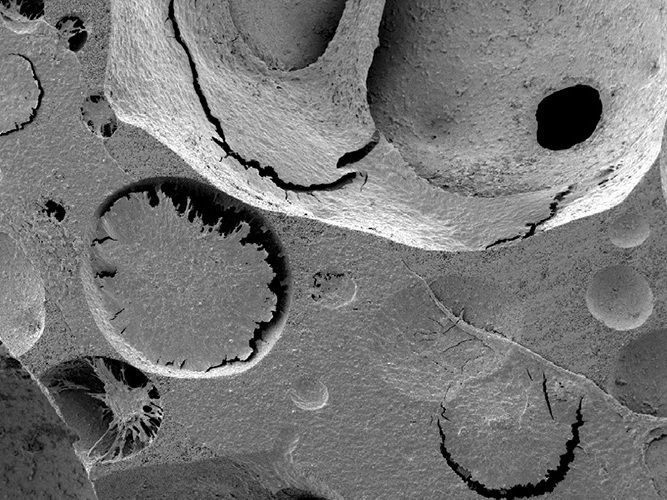A needle-prick to protect against insect bites
Advertisement
In persons with a severe allergy to bee or wasp venom, the bite of just one insect can even be fatal when it triggers acute respiratory distress and circulatory failure. A project funded by the FWF is working on vaccines that contain components of the insect venom in an attenuated form with significantly fewer side effects.

A basic research project sets out to develop vaccines against insect venom allergies which can be life-threatening for some people.
ulleo, pixabay.com, CC0
More and stronger sunshine rings in the season for bee and wasp stings. For the vast majority of people, cold compresses and something to relieve the itching will make the pain and swelling go away quickly. Their reaction to the venom is limited to the area of the sting. If, however, the sting triggers an immune reaction with antibodies of the immunoglobulin E (IgE) class, the individual is sensitized to the insect venom. Upon renewed contact, allergic symptoms may be triggered.
In Austria, around two percent of the population react to a sting with moderate to severe symptoms, ranging from severe itching and watering eyes to gastrointestinal or circulatory problems and even respiratory difficulties. Anyone who is aware of the allergy should carry strong antihistamines, inhalers and/or an adrenaline shot with them in an emergency kit. Anaphylactic shock is a dreaded systemic reaction, which can lead to unconsciousness and cardiovascular arrest. “In Europe, the number of unreported cases is about 200 deaths from bee and wasp venom per year. In adults, insect bites are the most frequent cause of anaphylactic shock; in children, they are the second-most frequent cause,” explains Irene Mittermann from the Medical University of Vienna. Supported by funding from the Austrian Science Fund FWF, her immunological research aims at the moleculobiological construction of attenuated allergens. Ultimately, they are intended to pave the way for vaccines against the venoms of bees and wasps.
Protective type G immunoglobulins
In diagnostics, purified allergens are used to determine the specific IgE antibodies and thus identify the insect responsible. Immunotherapy, on the other hand, uses insect venom extracts with little definition of the respective amounts and composition. Vaccine development is based on laboratory-produced, defined allergens of the bee and wasp venom. When it comes to protective vaccination, Mittermann relies on a proven principle: a combination of allergy-inducing proteins from a bees or wasp whose surface structure is modified (so-called hypoallergenic derivatives). The proteins are coupled to a carrier structure that reliably alerts the immune system. The intended effect is for the altered signatures of the allergens to be stored in the individual’s immunological memory.
This protective reaction is performed by antibodies of the immunoglobulin G (IgG) type. In case of a further sting, the IgG antibodies would block the IgE antibodies from binding to the allergens and thus prevent an allergic reaction. “We already know which of the proteins in the entire cocktail that we call bee or wasp venom are allergenic. It is more complex with bees than with wasps, though. Bee venom not only contains two main allergens to which most allergy sufferers react, but also secondary allergens that would have to be taken into account for vaccination,” explains the immunologist from the Institute of Pathophysiology and Allergy Research.
Focus on the surface
The overreaction of the IgE antibodies is responsible for the allergic symptoms. These antibodies bind to the surface of the insect venom allergens, which identifies the allergens as foreign to the body. Accordingly, what is contained inside the allergens is not as important for the vaccination. Over the past three years, Irene Mittermann has invested a great deal of time and effort in reconstructing, modifying to differing degrees and testing the most important insect venom allergens. The requirements these lab-made hypoallergenic derivatives have to fulfil are exacting: “The candidates must be easy to produce. They must not be recognized by IgE antibodies, but should instead result in IgG protection.” So far, only a handful of the main allergens of bees and wasps have passed both tests: the first involving the blood serum of precisely characterized severe allergy sufferers and the second involving rabbits as a model organism. These are the first steps on the way towards the needle-prick that will give protection against the stings of bees and wasps.
Original publication
Gattinger P, Mittermann I, Lupinek C, Hofer G, Keller W, Bidovec Stojkovic U, Korosek P, Kössler C, Novak N, Valenta R; "Recombinant glycoproteins resembling carbohydrate-specific IgE epitopes from plants, venoms and mites"; EBioMedicine; 2019.
Gattinger P, Lupinek C, Kalogiros L, Silar M, Zidarn M, Korosek P, Kössler C, Novak N, Valenta R, Mittermann I; "The culprit insect but not the severity of allergic reactions to bee and wasp venom can be determined by molecular diagnosis"; PLoS One; 2018.



















































